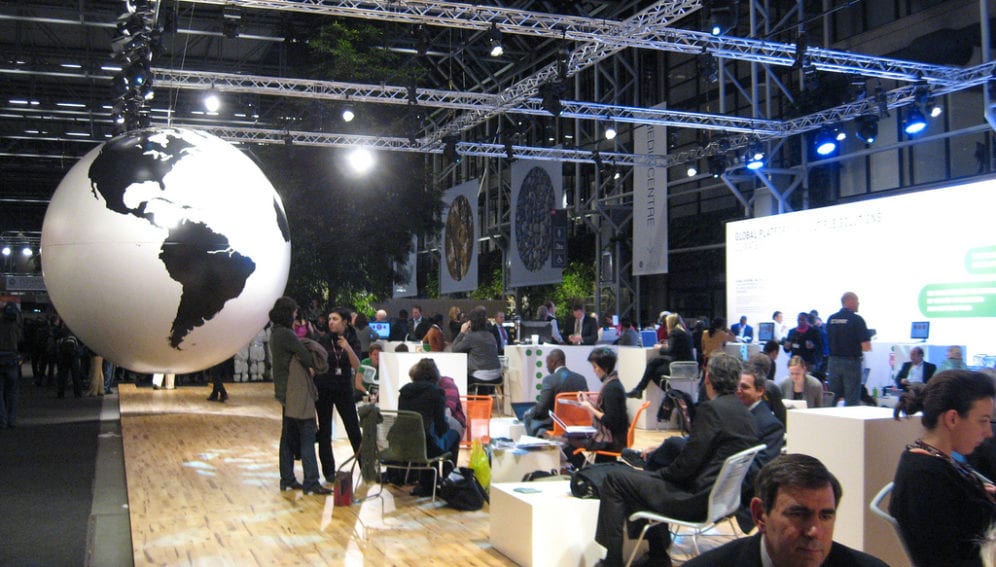By: Jan Piotrowski
Send to a friend
The details you provide on this page will not be used to send unsolicited email, and will not be sold to a 3rd party. See privacy policy.
The interests of rich countries can seem to dominate climate change negotiations, but a study that models such talks as a ‘bargaining game’ shows that side deals among poorer nations could boost chances of an international agreement.
Cooperation among countries that emit little green house gasses — mainly developing nations — could bring success when world leaders try next year to deliver a meaningful treaty in Paris, France, to cut emissions, according to the study in Nature Climate Change this month (11 May).
Previously agreed pacts help simplify UN Framework Convention on Climate Change (UNFCCC) negotiations, where hundreds of parties compete to get their interests served, says Rory Smead, assistant professor of philosophy at Northeastern University, United States, and an author of the study.
“If you can get a subset of parties to come to an agreement which they then bring to the table, that effectively makes the table smaller because part of the problem has already been solved,” he tells SciDev.Net.
“Starting with those parties that are interested in solving the problem could lead to greater success in bringing unwilling actors to accept a wider solution.”
“If you can get a subset of parties to come to an agreement which they then bring to the table, that effectively makes the table smaller because part of the problem has already been solved.”
Rory Smead, Northeastern University
To get to this finding, Smead and his colleagues computer-modelled millions of scenarios in which ‘players’ pledged to reduce their greenhouse gas emissions by a certain proportion in an attempt to halve emissions from the entire group.
Offers were revised during subsequent rounds of bidding until the goal was reached or an agreement was deemed impossible.
The team tested scenarios in which the number of negotiating parties, their emissions and the limits on how big a cut they could offer were varied.
As player numbers rose, the chances of a deal fell rapidly, they found, with a near 100 per cent success rate with two players falling to zero when 20 players are involved.
But if some players arrived to negotiations with pre-agreed limits — represented in the model by restrictions to the range of possible bids made by players — success rates jumped significantly.
While deals between a few heavy emitters help progress, larger coalitions of less influential countries have a much greater impact, the study finds.
For example, success in an eight-player scenario jumps from under 30 per cent to 55 per cent if the two largest emitters have already agreed to a 20 per cent emissions cut. But this figure jumps to more than 70 per cent if it is the six smaller emitters who begin with the same side deal, it says.
Ray of hope?
The findings offer a “ray of hope” that low-income countries could play a significant role in a climate deal, says Alessandro Tavoni, a research fellow specialising in game theory modelling at the London School of Economics, United Kingdom.
But he questions the level of influence the model gives to pacts between poorer nations, saying that evidence from real negotiations suggests the big emitters call the shots.
“My observations suggest that when there are a few big players, they can easily hijack negotiations,” he tells SciDev.Net. He says that if heavy emitters decide not to cooperate this can easily derail negotiations as lighter emitters often believe they are shirking their responsibility.
Smead says his model currently focuses on group dynamics and so cannot currently capture such political drivers — though his next step will be to try to factor these subtleties in.
Theoretical exercises such as this modelling study are important for bringing new perspectives and “out of the box” thinking, says Saleemul Huq, a senior fellow in the climate change group at the International Institute for Environment and Development, United Kingdom, and a member of the Least Developed Countries Independent Expert Group on the post-2015 development agenda.
And while the study may bolster the hopes of developing nations, many are already pursuing alternative greenhouse gas emissions agreements outside of the formal UNFCCC process through coalitions such as the Climate Vulnerable Forum, he says.














